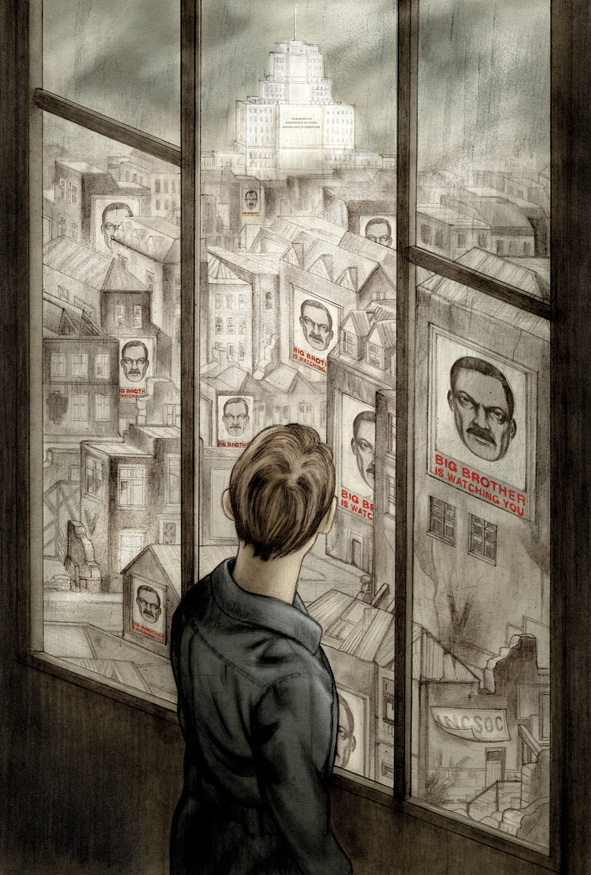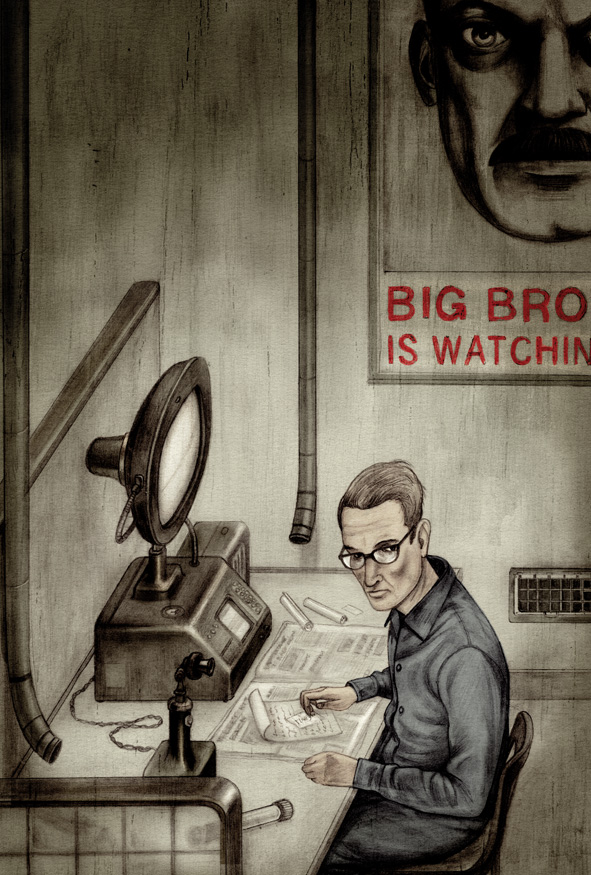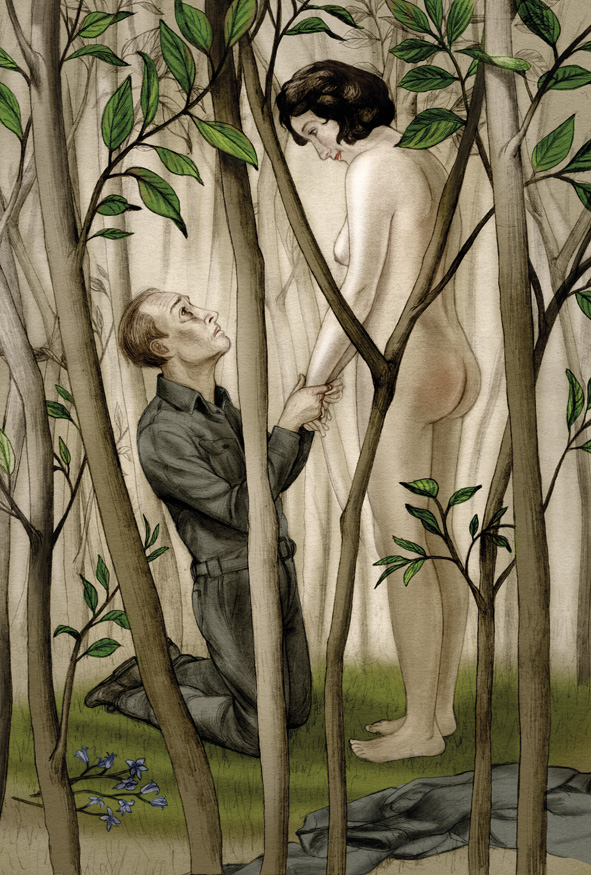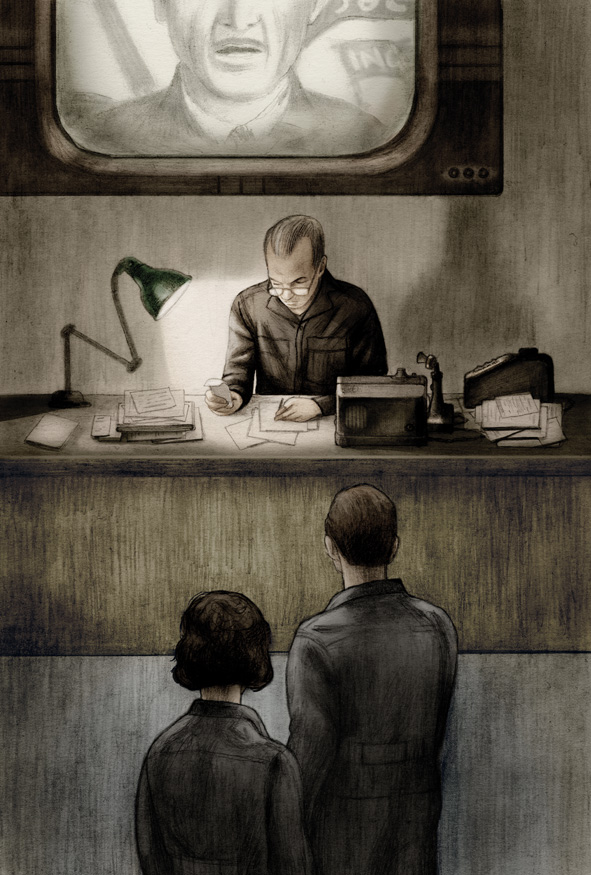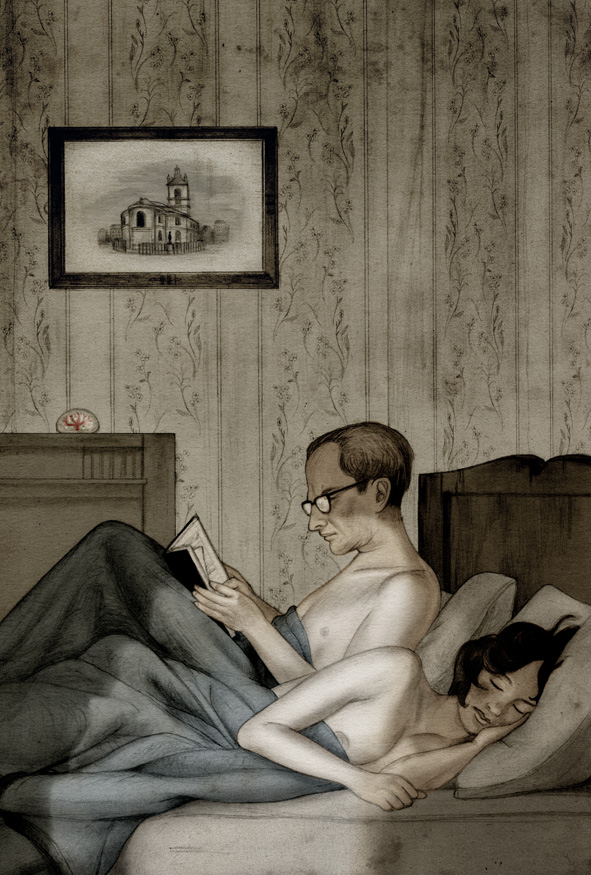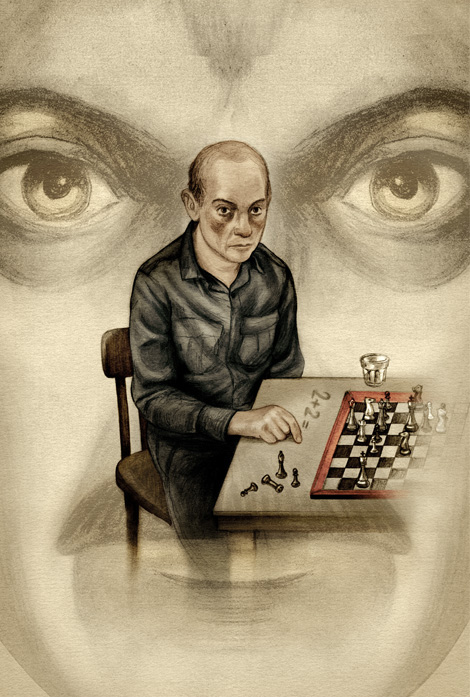Haunting Illustrations for Orwell’s Nineteen Eighty-Four, Introduced by the Courageous Journalist Who Broke the Edward Snowden Story
WHISTLEBLOWING - SURVEILLANCE, 22 Dec 2014
Maria Popova, Brain Pickings – TRANSCEND Media Service
“It was a bright cold day in April, and the clocks were striking thirteen.”
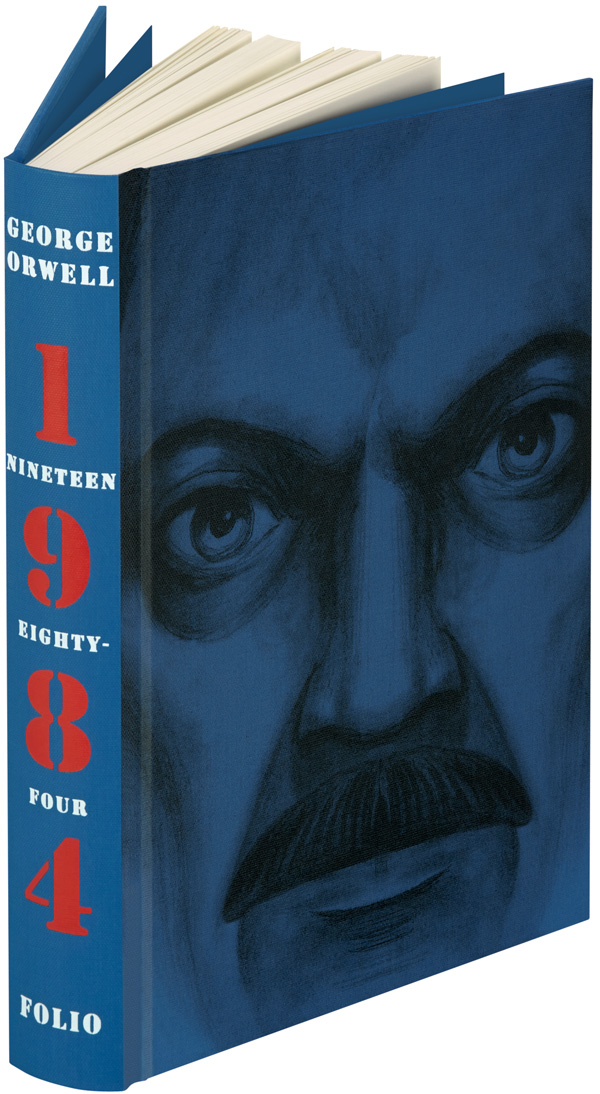 Few things in creative culture are more enchanting than an artist’s interpretation of a beloved book. There is Maurice Sendak’s rare and formative art for William Blake’s “Songs of Innocence,” William Blake’s paintings for Miltpreon’s Paradise Lost, Picasso’s 1934 drawings for a naughty ancient Greek comedy, Matisse’s 1935 etchings for Ulysses, and Salvador Dalí’s literary illustrations for Cervantes’s Don Quixote, Dante’s Divine Comedy, Shakespeare’s Romeo and Juliet, and the essays of Montaigne.
Few things in creative culture are more enchanting than an artist’s interpretation of a beloved book. There is Maurice Sendak’s rare and formative art for William Blake’s “Songs of Innocence,” William Blake’s paintings for Miltpreon’s Paradise Lost, Picasso’s 1934 drawings for a naughty ancient Greek comedy, Matisse’s 1935 etchings for Ulysses, and Salvador Dalí’s literary illustrations for Cervantes’s Don Quixote, Dante’s Divine Comedy, Shakespeare’s Romeo and Juliet, and the essays of Montaigne.
Since 1947, The Folio Society has served as the premier patron saint of such contemporary cross-pollinations of great art and great literature. Now comes a gorgeous slipcase edition of the George Orwell classic Nineteen Eighty-Four (public library), illustrated by Jonathan Burton — a book both timeless and extraordinarily, chillingly timely as we confront the aftermath of the NSA fallout, and the best visual interpretation of Orwell since Ralph Steadman’s spectacular illustrations for Animal Farm.
In the introduction, Guardian editor-in-chief Alan Rusbridger — who broke the Edward Snowden story in a masterwork of journalism and stood up to real-life Big Brother by refusing to hand over Snowden’s data to the government — explores the parallels, contrasts, and essential civic discourse springing from the difference between the two camps:
As the full impact of the Snowden revelations sank in, many people made the same connection, and Amazon announced a dramatic rise in sales of Nineteen Eighty-Four. To some, the young NSA analyst had revealed a world which was near-Orwellian; others thought that he had described a state of affairs that Orwell could barely have imagined. Just before Christmas 2013 a US District Judge, Richard Leon, pronounced the NSA’s surveillance capabilities to be “almost Orwellian.” Orwellian, beyond Orwellian, not-quite Orwellian. As the debate ricocheted around the world there soon developed the counter-school: not at all Orwellian. Or even, “Orwell got it wrong,” ignoring Thomas Pynchon’s caution about Nineteen Eighty-Four that “prophecy and prediction are not quite the same.” The not-Orwellians found it offensive that a book describing a totalitarian dystopia should be confused with the efforts of one of the most open, liberal democracies in the world to defend itself. And so the debate about the “Orwellian” nature of what the NSA was up to became a proxy for discussion of the issue itself.
But the book’s most important legacy, as Rusbridger suggests, lives in precisely that limbo between what Orwell got right and what he got wrong — a testament to “the unknowable question of what future purpose technology might be put to,” the darker answers to which we must at the very least acknowledge, even as we strive to offer more ennobling ones.
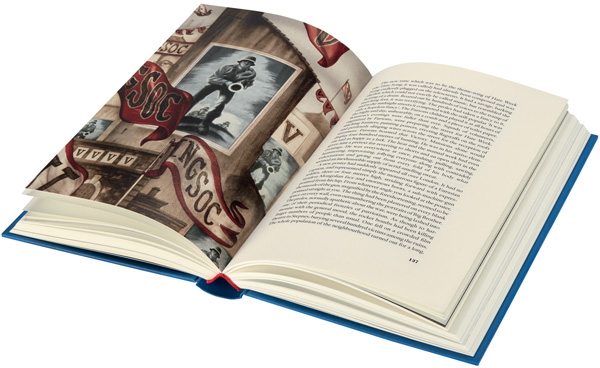 Complement Nineteen Eighty-Four with two other Folio Society favorites — artist Mimmo Paladino’s stunning etchings for Ulysses and John Vernon Lord’s visually gripping take on Finnegans Wake — then revisit Orwell on the freedom of the press, why writers write, the four questions a great writer must answer, and his eleven golden rules for the perfect cup of tea.
Complement Nineteen Eighty-Four with two other Folio Society favorites — artist Mimmo Paladino’s stunning etchings for Ulysses and John Vernon Lord’s visually gripping take on Finnegans Wake — then revisit Orwell on the freedom of the press, why writers write, the four questions a great writer must answer, and his eleven golden rules for the perfect cup of tea.
_____________________________
Brain Pickings is the brain child of Maria Popova, an interestingness hunter-gatherer and curious mind at large obsessed with combinatorial creativity who also writes for Wired UK and The Atlantic, among others, and is an MIT Futures of Entertainment Fellow. She has gotten occasional help from a handful of guest contributors.
Illustrations courtesy of Folio Society © Jonathan Burton 2014
Go to Original – brainpickings.org
DISCLAIMER: The statements, views and opinions expressed in pieces republished here are solely those of the authors and do not necessarily represent those of TMS. In accordance with title 17 U.S.C. section 107, this material is distributed without profit to those who have expressed a prior interest in receiving the included information for research and educational purposes. TMS has no affiliation whatsoever with the originator of this article nor is TMS endorsed or sponsored by the originator. “GO TO ORIGINAL” links are provided as a convenience to our readers and allow for verification of authenticity. However, as originating pages are often updated by their originating host sites, the versions posted may not match the versions our readers view when clicking the “GO TO ORIGINAL” links. This site contains copyrighted material the use of which has not always been specifically authorized by the copyright owner. We are making such material available in our efforts to advance understanding of environmental, political, human rights, economic, democracy, scientific, and social justice issues, etc. We believe this constitutes a ‘fair use’ of any such copyrighted material as provided for in section 107 of the US Copyright Law. In accordance with Title 17 U.S.C. Section 107, the material on this site is distributed without profit to those who have expressed a prior interest in receiving the included information for research and educational purposes. For more information go to: http://www.law.cornell.edu/uscode/17/107.shtml. If you wish to use copyrighted material from this site for purposes of your own that go beyond ‘fair use’, you must obtain permission from the copyright owner.
Read more
Click here to go to the current weekly digest or pick another article:
WHISTLEBLOWING - SURVEILLANCE:
